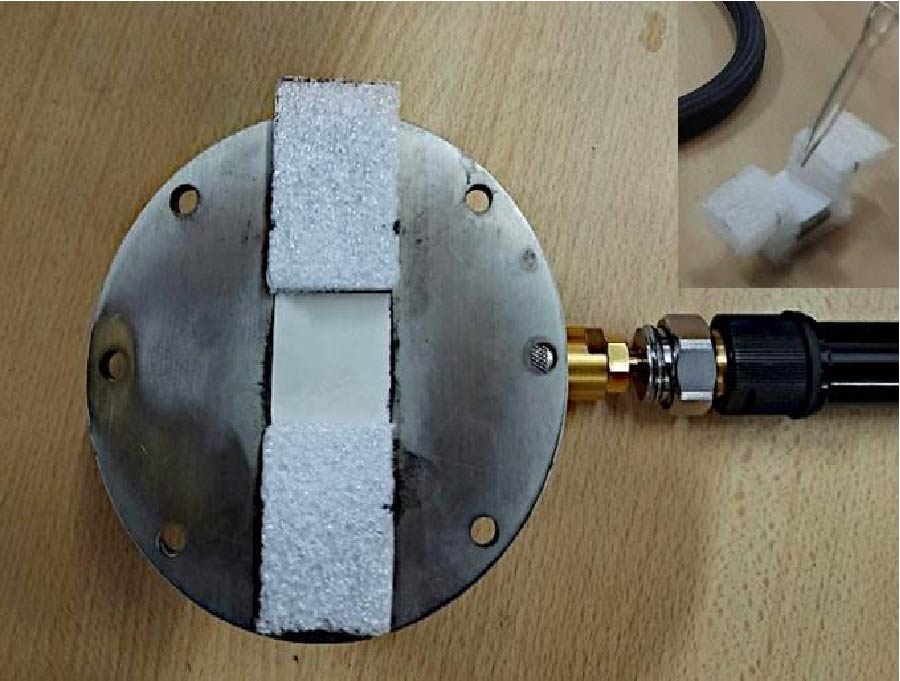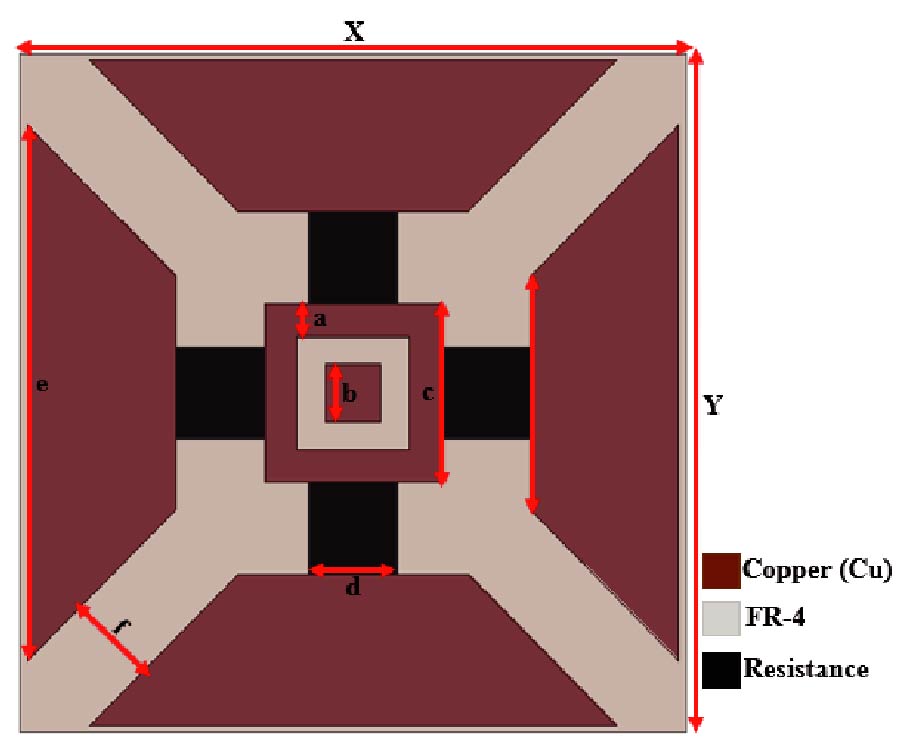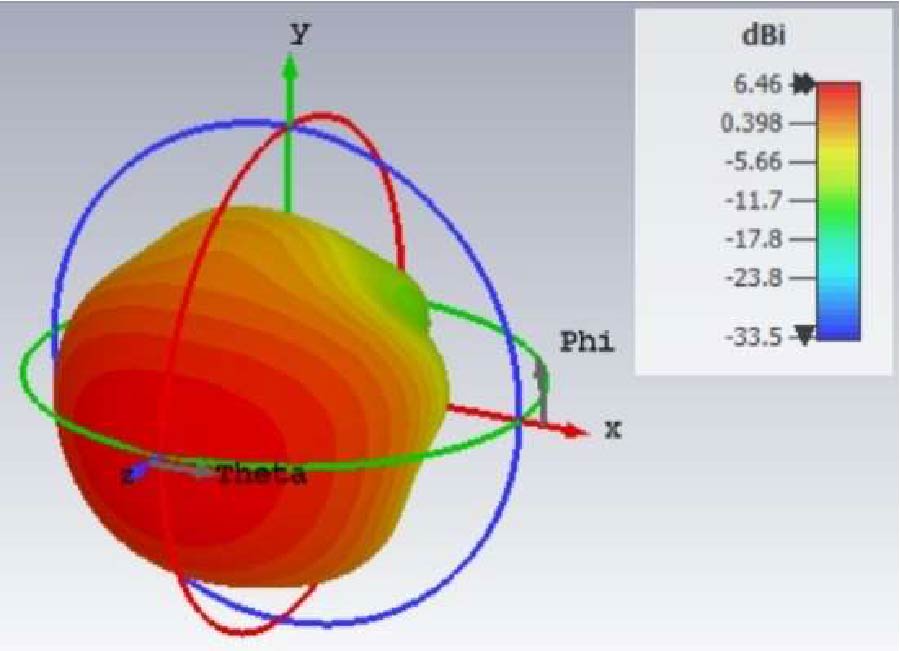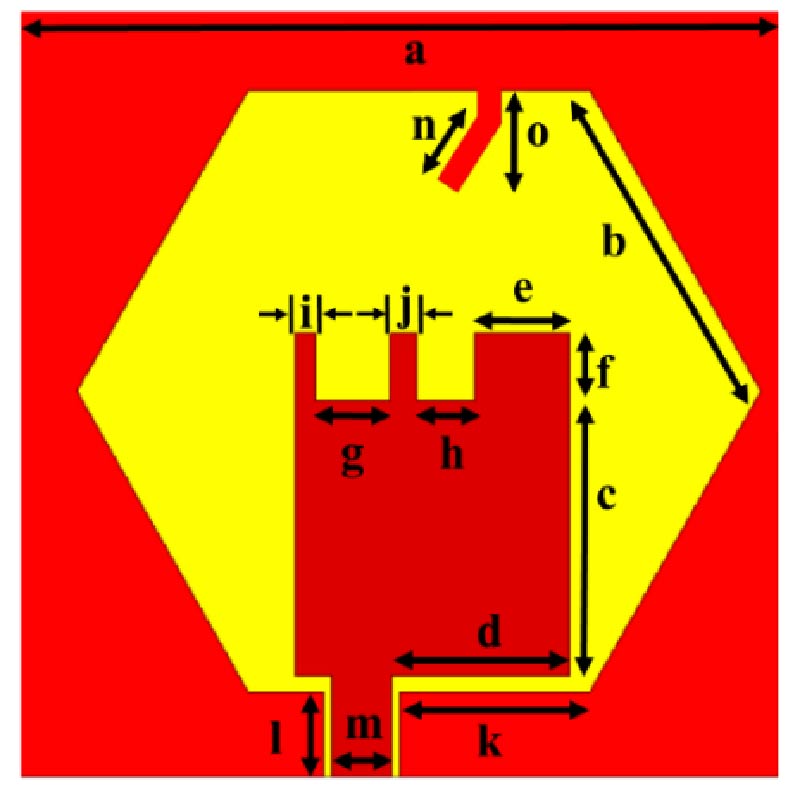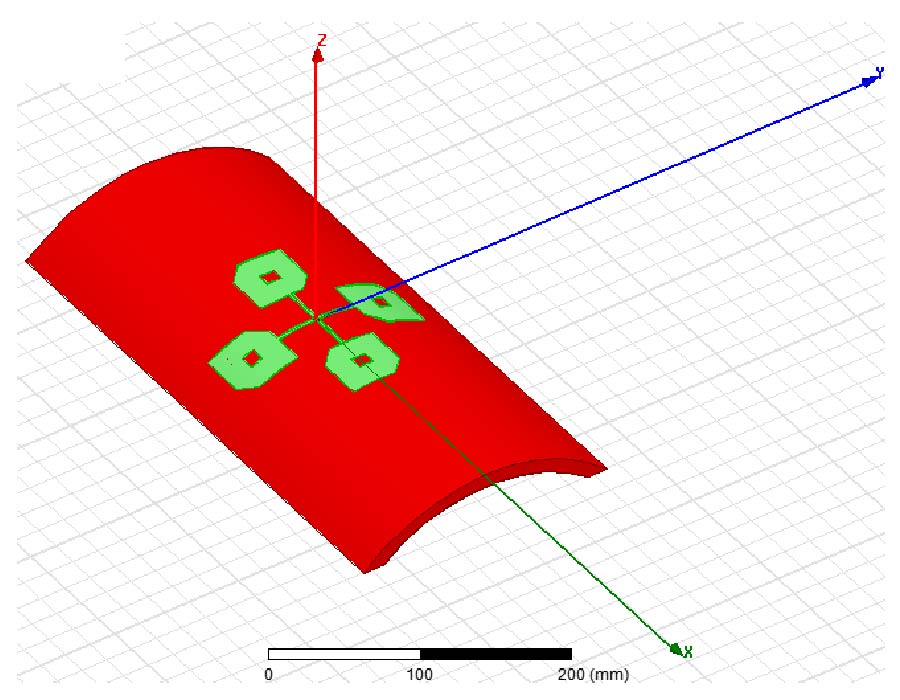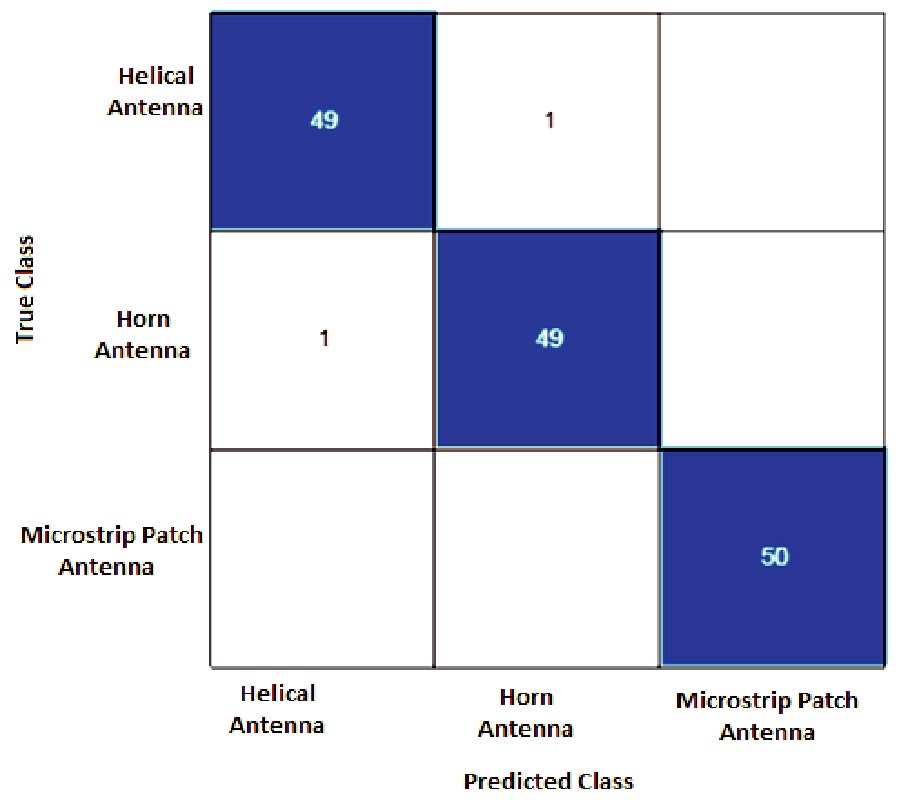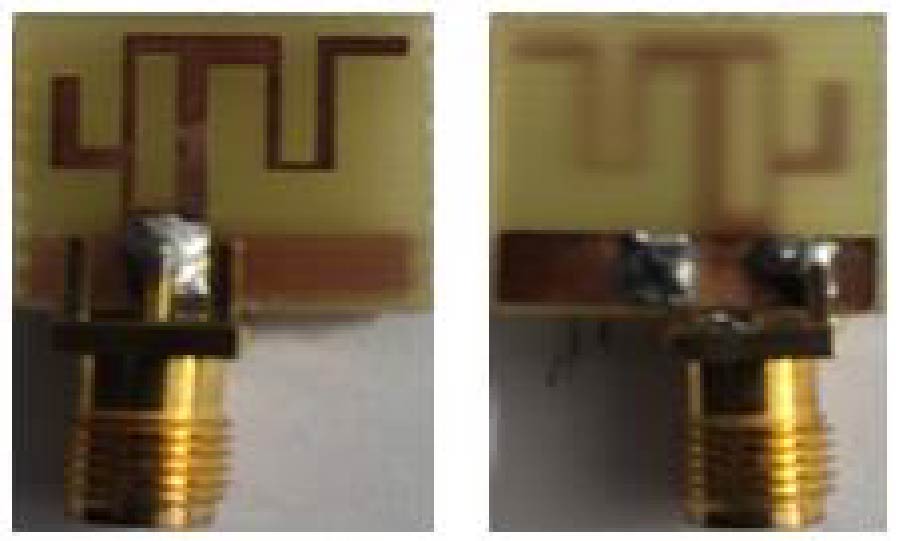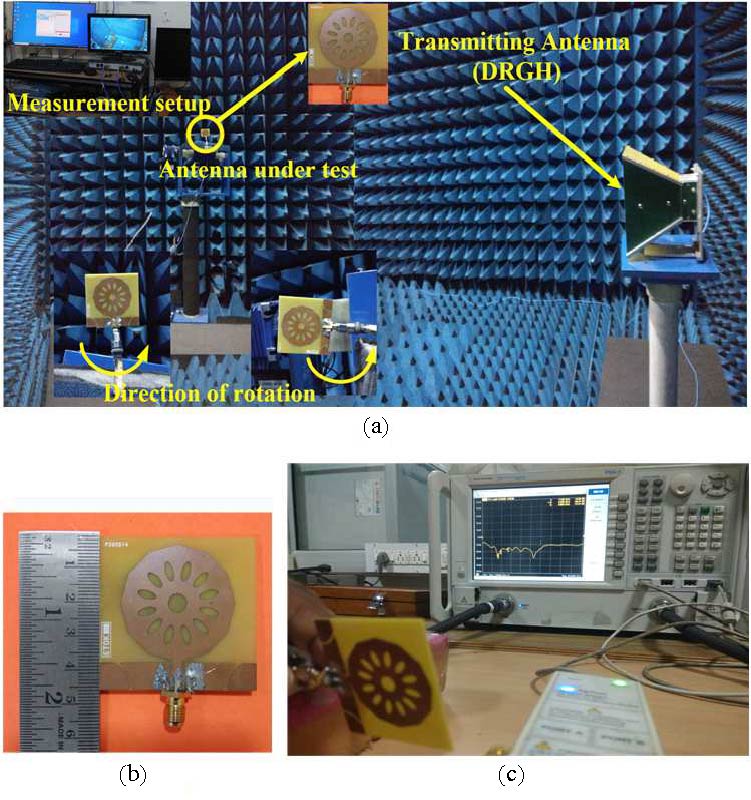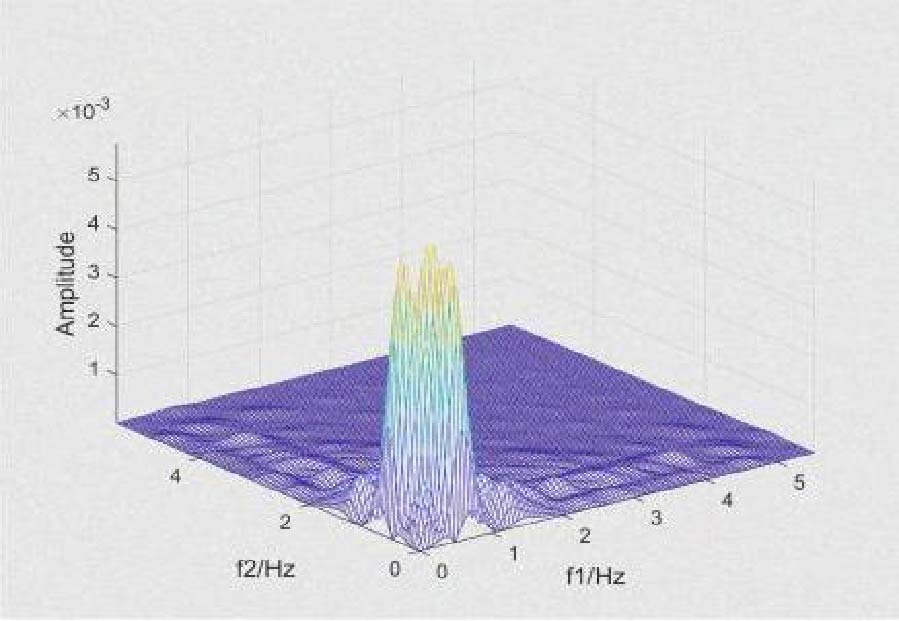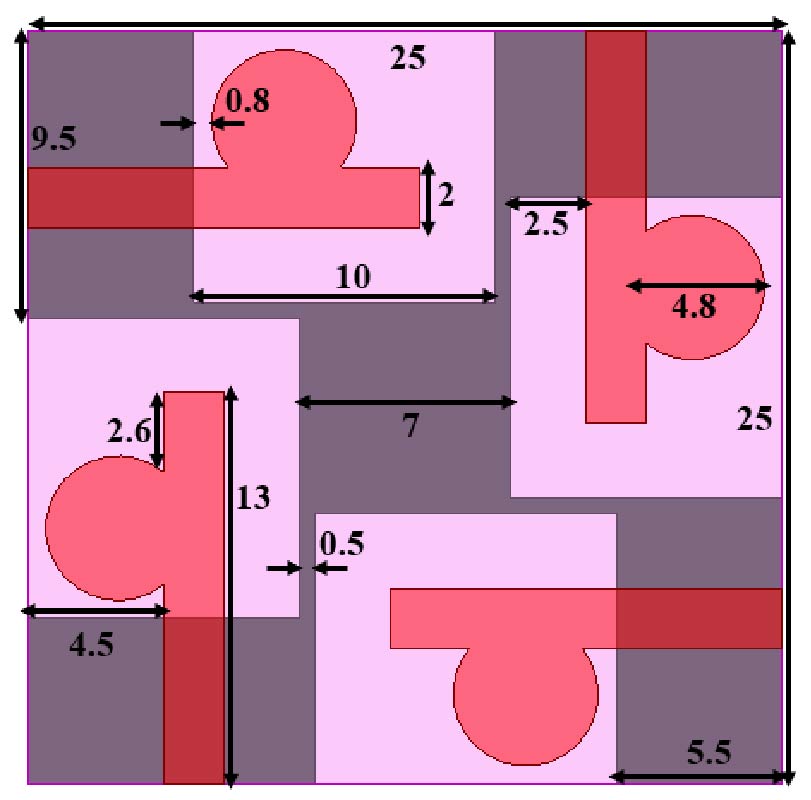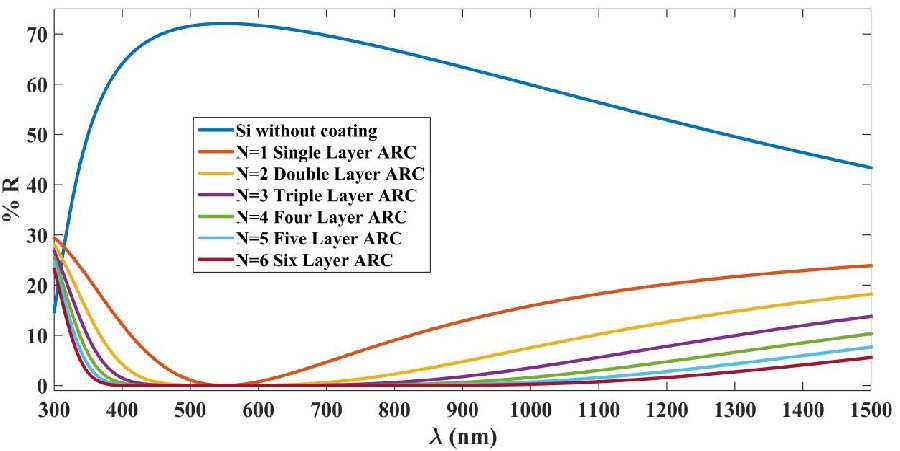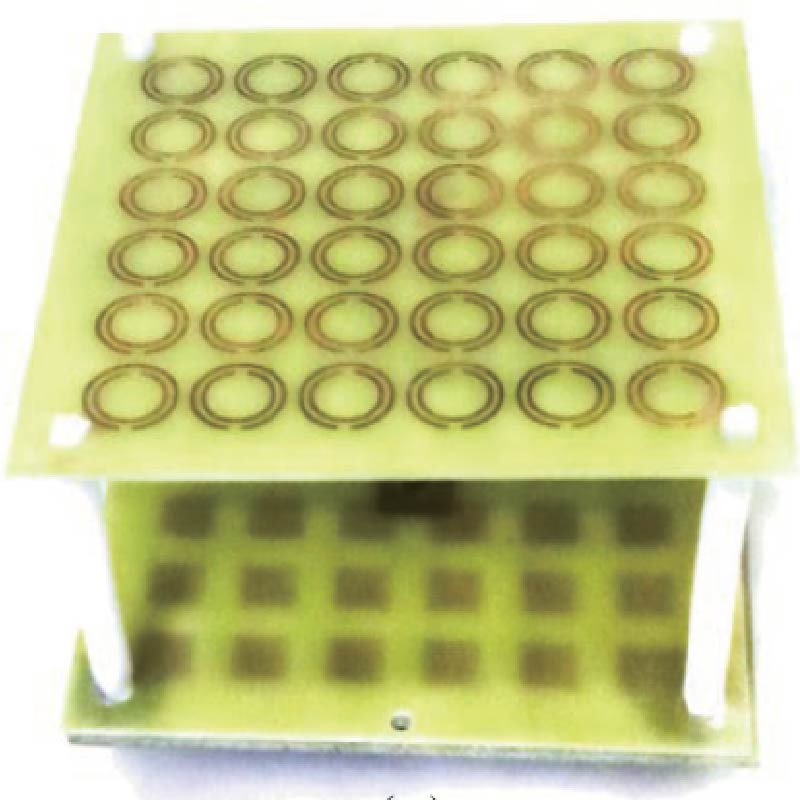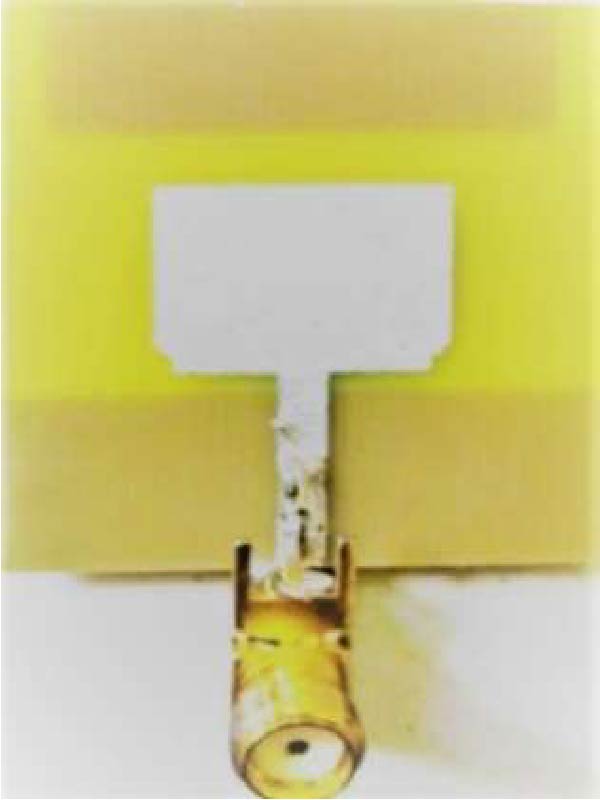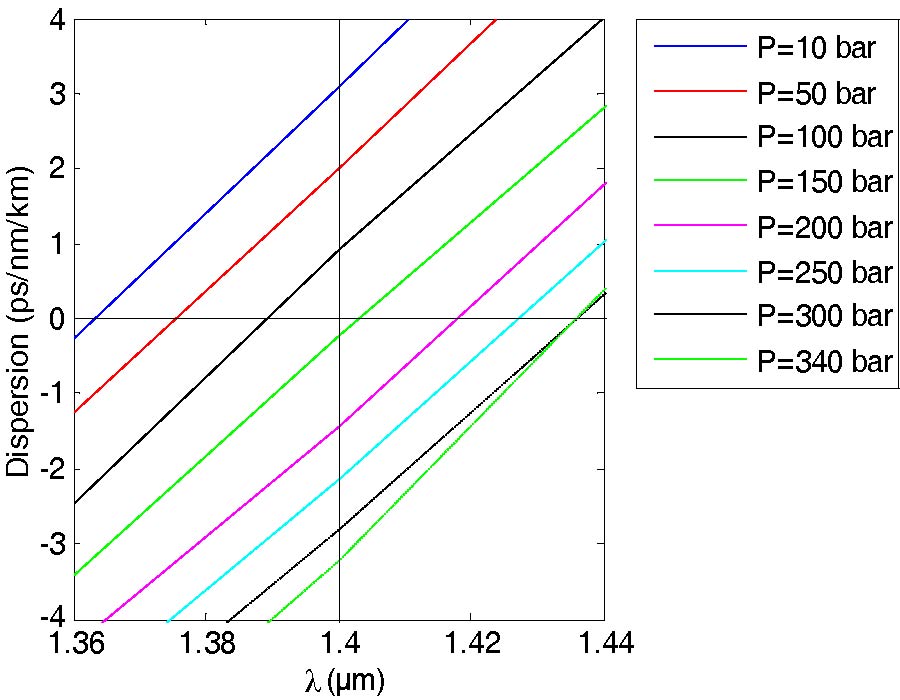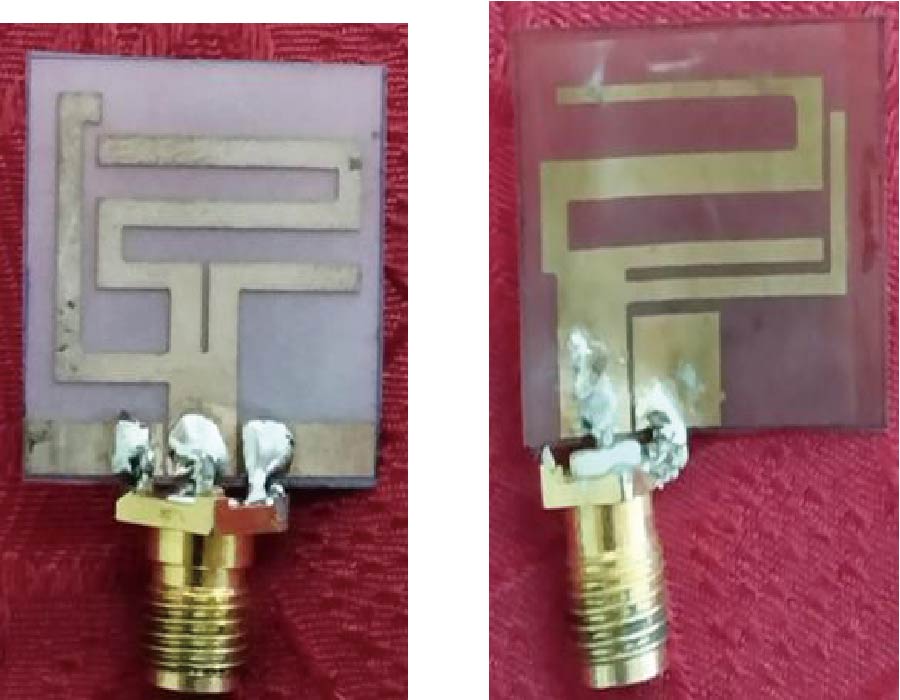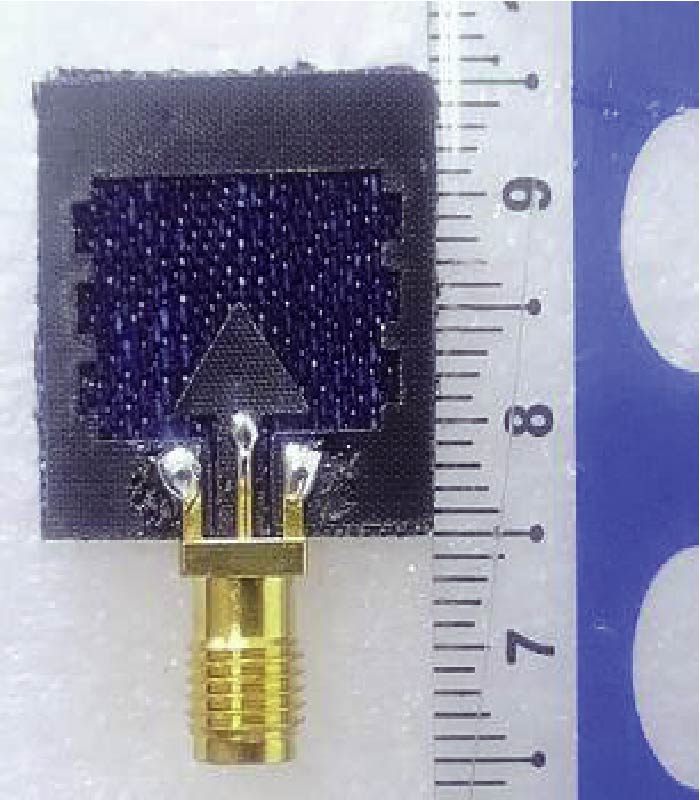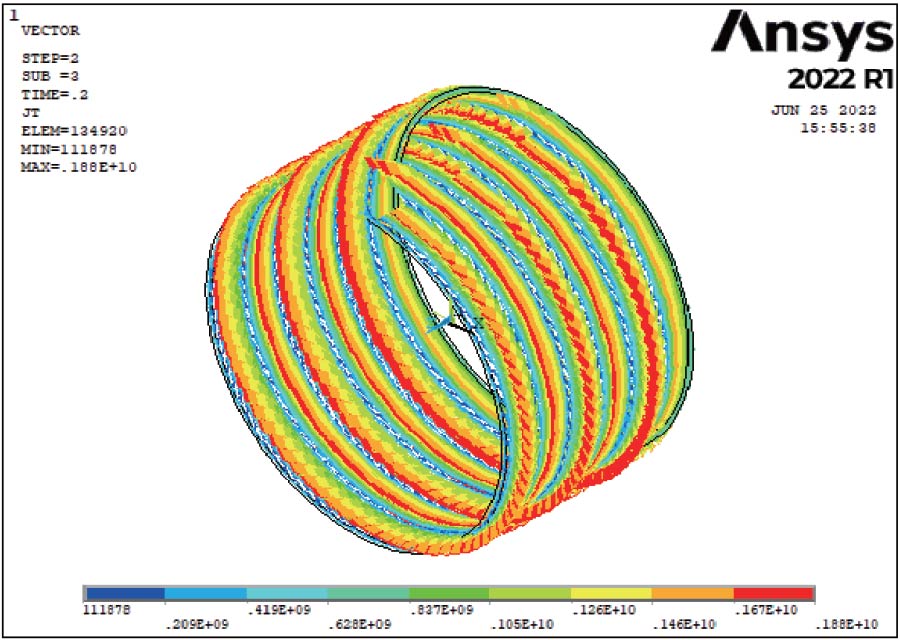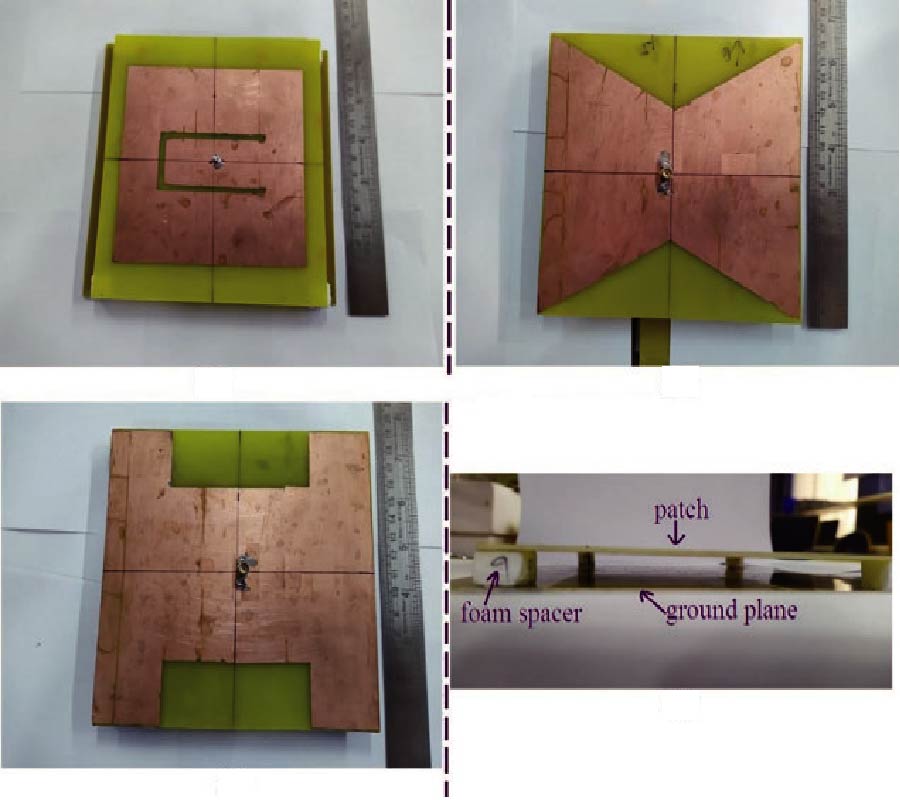Compact High Gain Microstrip Array Antenna Using DGS Structure for 5G Applications
Hesham Mahmoud Emara,
Sherif K. El Dyasti,
Hussein Hamed Ghouz,
Mohamed Fathy Abo Sree and
Sara Yehia Abdel Fatah
In this paper, a microstrip millimeter-wave (MMW) array antenna with a Defected Ground Structure (DGS) has been presented for the applications of fifth generation (5G) wireless networks. This novel antenna, which has small dimensions with higher gain, can be used for licensed 5G applications in many countries, like the United States of America, Canada, Australia, Japan, India, and China. It also covers a band that is planned for licensed use in some countries, like Colombia and Mexico. The proposed model has a single element design, and for gain and efficiency enhancement, a two-element array has been designed. Both single and two element models resonate at a frequency of 39.96 GHz. Using a commercial electromagnetic simulator (CST-Studio), the model was designed and optimized with the goal of achieving a return loss rate of less than -10 dB. The proposed antenna is built on a compact Rogers substrate (RT-5880) with dimensions of 6 mm x 6 mm for the substrate of the single element and 9 mm x 13 mm for the two-element array. The substrate has a thickness of 0.508 mm, a dielectric constant εr of 2.2, and a loss tangent tanδ value of 0.0009. This suggested design is small, low profile, and simple to guarantee the dependability, mobility, and high efficiency needed to be used with a variety of 5G wireless applications. The high gain of 11.6 dBi for the two-element array model of the proposed antenna is one of its distinctive features. The suggested single element model has an impedance bandwidth of 2.3 GHz, and 2.1 for the two-element array model, satisfying efficiency of approximately 73.5% for the single element and 85% for the two-element array model, respectively. The proposed structure, compared to other designs found in the literature, has smaller size while maintaining other parameter values of comparable orders.
